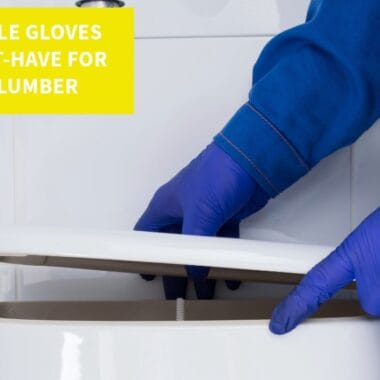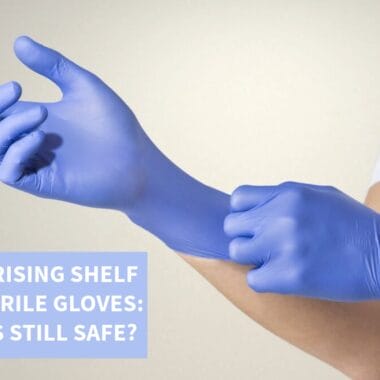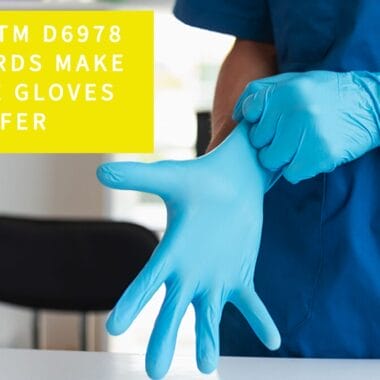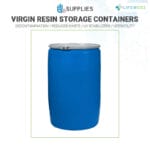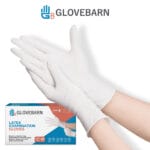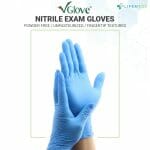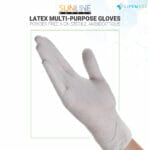What is PPE Fit Testing?
PPE fit testing is the process of ensuring that personal protective equipment (PPE), specifically tight-fitting respiratory protection like N95 respirators or other face masks, forms a secure and proper seal around the wearer’s face. This ensures that the equipment provides the intended level of protection against airborne contaminants, such as dust, fumes, or infectious pathogens. Fit testing is required by regulatory bodies, such as the Occupational Safety and Health Administration (OSHA) in the U.S., to verify that respirators effectively protect workers in high-risk environments, such as healthcare, construction, and manufacturing.
There are two main types of fit testing: qualitative and quantitative. Qualitative fit testing uses the wearer’s sensory detection (taste or smell) of a test agent, while quantitative fit testing uses specialized equipment to measure the actual amount of leakage into the respirator.
Why PPE Fit Testing Matters in the Enterprise Environment
Fit testing is crucial for ensuring that respiratory protective equipment, such as N95 respirators, is properly fitted to each worker’s unique facial structure. Even if a respirator is certified and meets the required protection standards, it may not provide adequate protection if it doesn’t fit the wearer correctly. Poorly fitted respirators can result in dangerous leaks, exposing workers to harmful airborne contaminants, which can lead to respiratory illnesses or other health issues.
In industries like healthcare, manufacturing, and chemical processing, where workers are exposed to harmful substances or infectious agents, fit testing helps protect workers by ensuring that they are equipped with effective respiratory protection. Organizations that implement regular fit testing not only comply with safety regulations but also foster a safer work environment, reducing the risk of occupational health hazards.
Benefits of PPE Fit Testing
PPE fit testing provides several key benefits, particularly in environments where respiratory protection is critical. These benefits include:
- Enhanced Protection: Fit testing ensures that respirators are properly sealed, offering workers full protection from airborne hazards such as chemicals, dust, and pathogens.
- Regulatory Compliance: Fit testing is often mandated by regulatory bodies like OSHA, which requires employers to conduct fit testing before workers use respirators and on an annual basis thereafter. Regular testing helps businesses comply with safety regulations and avoid penalties.
- Customized Protection: Each worker’s facial structure is different, and fit testing ensures that every individual receives the correct size and type of respirator that fits securely and provides effective protection.
- Improved Worker Confidence: Workers who have been fit-tested and properly trained on using their PPE correctly are more confident in their protection, leading to increased productivity and reduced anxiety in high-risk environments.
- Reduced Risk of Occupational Illnesses: By ensuring that respirators fit correctly, businesses can significantly reduce the risk of occupational diseases related to respiratory exposure, such as asthma, silicosis, or lung infections.
Types of PPE Fit Testing
There are two primary methods for conducting PPE fit testing:
- Qualitative Fit Testing: This method uses the wearer’s sensory response (taste or smell) to detect a harmless test agent introduced around the face seal of the respirator. Common test agents include saccharin (sweet taste), isoamyl acetate (banana smell), or Bitrex (bitter taste). The test determines if the respirator’s fit is adequate by assessing whether the wearer can detect the agent. This type of testing is subjective and typically used for disposable respirators like N95 masks.
- Quantitative Fit Testing: This method uses specialized equipment to measure the amount of leakage into the respirator. A machine known as a Portacount Fit Tester or other quantitative device measures the concentration of particles inside and outside the mask, providing an objective and precise fit factor. Quantitative fit testing is often used for tight-fitting respirators and is considered more accurate than qualitative testing.
The Role of Enterprise Software in Managing PPE Fit Testing
Enterprise software solutions can significantly streamline the process of managing PPE fit testing by automating scheduling, tracking results, and ensuring compliance with safety regulations. Key features of enterprise software for managing fit testing include:
- Fit Testing Scheduling: The software can automate the scheduling of fit testing sessions, ensuring that all employees receive timely tests, including annual retests or additional tests when new types of respirators are introduced.
- Record Keeping: The software can maintain detailed records of fit testing results, including pass/fail outcomes, respirator models tested, and employee-specific data. This is crucial for regulatory compliance and can help businesses quickly access information during audits or inspections.
- Compliance Management: Enterprise software can monitor and track whether employees are fit-tested in accordance with OSHA or other regulatory requirements, helping organizations avoid potential fines or legal penalties.
- Training Management: Many software solutions also offer training modules to ensure that employees are properly trained on how to wear and maintain their respirators after fit testing, further improving worker safety.
- Reporting and Analytics: The software can generate reports on fit testing outcomes, helping safety managers identify trends, areas for improvement, and opportunities to enhance PPE usage across the organization.
PPE Fit Testing vs. Fit Checks
While PPE fit testing is a formal process that involves structured testing to ensure proper fit, fit checks (or user seal checks) are informal tests that workers perform each time they wear a respirator to confirm a good fit. Fit checks involve the wearer blocking the respirator’s filter and inhaling or exhaling to ensure that no air leaks around the mask. Here’s a comparison between fit testing and fit checks:
- Fit Testing: A formal and regulated process required by OSHA and other safety organizations, typically conducted annually or when a new respirator type is introduced. It involves either qualitative or quantitative methods to ensure the mask forms a proper seal.
- Fit Checks: Informal checks performed by the wearer before each use of the respirator to confirm that it is sealed correctly. Fit checks are an important practice, but they do not replace the need for formal fit testing.
Key Industries Requiring PPE Fit Testing
PPE fit testing is mandatory in industries where workers face respiratory hazards, particularly those involving harmful airborne particles, chemicals, or infectious agents. Some key industries requiring PPE fit testing include:
- Healthcare: Healthcare workers, especially those dealing with infectious diseases or hazardous substances, must undergo fit testing for respirators such as N95 masks to protect against airborne pathogens.
- Construction: Workers exposed to dust, asbestos, and silica must be fit-tested for respirators to protect against inhaling hazardous particles on construction sites.
- Chemical Processing: Employees working in chemical plants need fit testing for respirators that protect against chemical fumes and toxic gases.
- Manufacturing: Workers in manufacturing environments where dust, fumes, or other airborne contaminants are present must undergo regular fit testing for respirators to reduce the risk of occupational respiratory diseases.
- Mining: Fit testing is required for miners to protect against exposure to coal dust, silica, and other harmful substances that can lead to respiratory illnesses.
Conclusion
PPE fit testing is an essential process for ensuring the effectiveness of respiratory protection in high-risk environments. By confirming that respirators fit correctly and form a secure seal, fit testing helps protect workers from exposure to harmful airborne contaminants, infectious agents, and hazardous materials. Enterprise software solutions further enhance the management of fit testing programs, helping businesses automate scheduling, track compliance, and maintain detailed records. In industries such as healthcare, construction, and chemical processing, regular fit testing is not only a regulatory requirement but also a critical step in protecting workers’ health and safety.
« Back to Glossary Index

